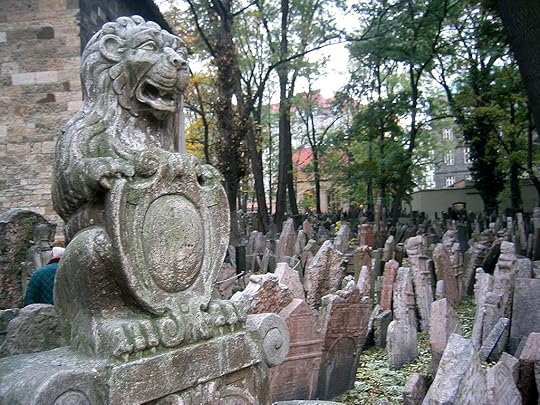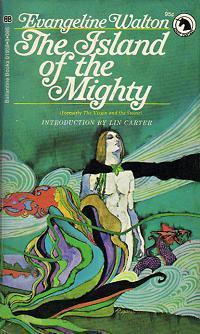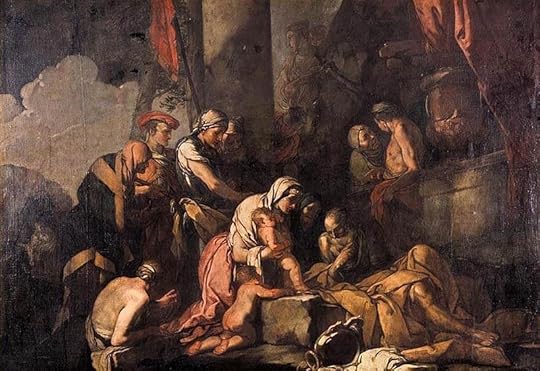Stephen Morris's Blog, page 46
November 3, 2014
Benedict Cumberbatch as THE Monster — “It’s ALIVE!”

Benedict Cumberbatch as Frankenstein’s creature in the National Theatre’s 2011 production.

Close-up of Benedict Cumberbatch as the creature of Dr. Frankenstein in 2011.
Last week saw the third encore cinema screening of the amazing 2011 Royal National Theatre production of “Frankenstein,” starring Benedict Cumberbatch and Jonny Lee Miller (directed by Danny Boyle). Cumberbatch and Miller, each a star/incarnation of a version of Sherlock Holmes, alternate nights in the roles of Dr. Frankenstein and his creature. My partner Elliot and I saw the October 31 screening (at Symphony Space in New York); we saw Benedict as the monster — AMAZING! Having been warned by a friend that this production “is neither the book nor the Boris Karloff movie,” we were ready for a new interpretation of the Mary Shelley classic but this far surpassed any hopes or expectations we might have had.
This version includes the blind recluse, the dead child in the water, and the tortured hunt through the Arctic but the creature that Frankenstein creates is both more organic and his environment more a wasteland of the Industrial Revolution than ever before. As the creature learns to control his body, to speak, and to read he struggles to become human but realizes at last that the only way to become truly human in a way that the world at large will recognize is to embrace his own worst, most vile instincts.
Many writers try to draw parallels between Frankenstein’s creature and the Golem said to have been made by Rabbi Judah ben Lowe in Prague but the two are at radical odds with each other: one can speak, the other not but the one who can speak remains nameless while the speech-deprived golem is given the dignity of a name and a valued place in the rabbi’s household.
The post Benedict Cumberbatch as THE Monster — “It’s ALIVE!” appeared first on Stephen Morris, author.
October 29, 2014
“Trick or Treat!”
October 27, 2014
Samhain

The Jewish Cemetery in Prague. The doorways between the living and the dead were thought to open on the Celtic feast of Samhain.
“Winter is coming!” Samhain, the Celtic festival more commonly known as “Hallowe’en,” was considered the first day of winter in the Middle Ages and Renaissance. Marking the day halfway between the autumnal equinox and the Winter Solstice, Samhain marked the beginning of the sun’s descent into darkness and the world’s embrace by the growing cold. Both these trends would be reversed at the Winter Solstice, marking the “midpoint” of the Winter season.
Like Beltane, on April 30-May 1, Samhain was seen as a time when the ‘door’ to the Otherworld opened enough for the souls of the dead, and other beings such as fairies, to come into our world. The souls of the dead were said to revisit their homes on Samhain. Lewis Spence described it as a “feast of the dead” and “festival of the fairies”. However, harmful spirits and fairies were also thought to be active at Samhain. People took steps to allay or ward-off these harmful spirits/fairies, which is thought to have influenced today’s Halloween customs. The practice of lighting bonfires during Hallowmas may have been a Christianized one, as the Celts lit bonfires during Samhain as well.
I am currently working on a novel set in Ireland, Earth to Earth, Ashes to Ashes, that picks up on loose ends from Part 2 of the Come Hell or High Water trilogy. Earth to Earth involves the Celtic goddesses of battle and death, mortals from this world abducted to the Otherworld, and the Celtic holidays of Samhain and Imbolc or Ostara.
The post Samhain appeared first on Stephen Morris, author.
October 20, 2014
9 Real People Who May Have Inspired Fairy Tales

This cartoon comes from Sandman, #50 (Ramadan).
Who doesn’t love fairy tales? We all have our childhood favorites — mine were Hansel and Gretel, Sleeping Beauty, and Rapunzel. Oh, and Snow White! I would collect images (picture books, View Master slides — remember them?? — the Disney movies) of the characters, especially the witches in each of those tales. The saga of Baba Yaga stories were also great sources of witch-lore as well. But what if you could meet the real Hansel and Gretel? Or Rapunzel? Or the real Sleeping Beauty? Did you ever imagine there was an historical kernel underneath the stories that enchanted and bewitched us as children? Fairy tales are often the sanitized or watered-down version of ancient mythology but they are just as often the slightly embroidered accounts of real events.
Lauren Davis has a great post about real people or incidents that may have given birth to commonly told favorite fairy tales. Read her blog here. The Sussex Centre for Folklore, Fairy Tales, and Fantasy is also a great source of information like this.
The post 9 Real People Who May Have Inspired Fairy Tales appeared first on Stephen Morris, author.
October 13, 2014
See yourself here?

In September 2014, the most visitors to this site were from the USA, the UK, Canada, Spain, and Australia.
The monthly data for September is now available! There were 845 unique visitors to this site, with the most coming from the countries highlighted in the map above. The posts that most people visited were about emerald, sage, daffodil, diamonds, and marigold. It’s always interesting to see which searches bring people to visit and what other pages/posts they look at once they are here.
Were these 5 subjects what brought YOU here for the first time? Please share below what you were looking for when you discovered www.stephenmorrisauthor.com!
The post See yourself here? appeared first on Stephen Morris, author.
October 7, 2014
The Mabinogion

“The Island of the Mighty” is the first volume in Evangeline Walter’s 4-book series retelling the Welsh stories found in the Mabinogion.
There have been many translations and retellings of the Welsh mythology known as the “Mabinogion.” Evangeline Walter has done the best job of retelling the stories for a modern adult reader. Lloyd Alexander brought several characters from the Mabinogion to life in his Prydain Chronicles for younger readers. Disney took two of Alexander’s books to use as the basis of their animated film, “The Black Cauldron.”
Apart from the difficulty in pronouncing the Welsh names (just remember the double LLs are pronounced like “chl”, an Eastern European rolling hocking sound in the back of your throat followed by the “L” sound and that double DDs are “th”), the stories in the Mabinogion are some of the most wonderful and fantastic in world folklore. But again, there is a lot of code: what does it mean to “hold the feet” of Math? Are his “feet” a euphemism for his sexual organs like in the Old Testament? And the sudden birth accounts that imply sex must have happened previously but is never directly referred to.
If you are looking for autumnal reading, I highly recommend the Mabinogion in one of its many forms!
Hear the BBC report about the Mabinogion here.
The post The Mabinogion appeared first on Stephen Morris, author.
September 27, 2014
The Scales of Justice (September 23 — October 22)

The scales of Libra are sometimes associated with Tiresias, the aged prophet — shown here being presented with the child Narcissus. Tiresias is presented as a complexly liminal figure, with a foot in each of many oppositions, mediating between the gods and mankind, male and female, blind and seeing, present and future, and this world and the Underworld.
Libra, the scales of justice, is the astrological sign that governs those born September 23 to October 22 each year.
It has been suggested that the scales are an allusion to the fact that when the sun enters this part of the ecliptic at the autumnal equinox, the days and nights are equal. In Roman mythology, Libra is considered to depict the scales held by Astraea (identified as Virgo, the previous sign of the zodiac), the goddess of justice. Because scales always seek balance, they are associated with oppositions: life/death, earth/otherworld, sight/blindness, ignorance/foreknowledge, male/female, humanity/divinity, and so on. Because the mythological prophet Tiresias was said to be both blind and foreknowing as well as having lived for 7 years as a woman who had 3 children (the result of a curse by Athena or Hera), he was also associated with these oppositions and balances.
In one version of the sex-change story, Tiresias sees 2 snakes copulating and he strikes them with his staff. For some reason, this offends Hera who punishes him by changing him into a woman. The association of his staff with the 2 snakes has also led to his association with the caduceus (the 2 snakes winding about a staff, a symbol of communication but often confused with the single-snaked symbol of healing).
The post The Scales of Justice (September 23 — October 22) appeared first on Stephen Morris, author.
September 22, 2014
Mabon, the first day of Autumn

Goose and apples are traditional foods for the celebrations of the autumnal equinox, Mabon, and Michaelmas.
The sky is darker now when I get up in the morning because the sun rises later in the morning(though I do not)! This year, the NYC weather reports all say that the equinox happens Monday night (Sept. 22) at 10:29 p.m. In many cultures, the September equinox is a sign of fall (autumn) in the northern hemisphere. In Greek mythology fall is associated with when the goddess Persephone returns to the underworld to be with her husband Hades. It was supposedly a good time to enact rituals for protection and security as well as reflect on successes or failures from the previous months.
In the Celtic pracitce, the autumnal equinox, is also known as ‘Mabon,’ the Welsh God who symbolized the male fertilizing principle in the Welsh myths. Some mythologists equate him as the male counterpart for Persephone.
Mabon ap Modron is a figure of Welsh mythology, the son of Modron. Both he and his mother were likely deities in origin, descending from a divine mother–son pair. His name is related to the Romano-British god Maponos, whose name means “divine son”; Modron, in turn, is likely related to the Gaulish goddess Dea Matrona.
Mabon was a common name in medieval Wales, and it is difficult to determine whether the various references to Mabons in poetry and the Triads are to the same character. The most important appearance of Mabon ap Modron is in the prose tale Culhwch and Olwen, associated with the Mabinogion and perhaps authored around 1100. King Arthur’s men must recruit Mabon to fulfill the demands of Ysbaddaden the giant before he will allow his daughter Olwen marry the protagonist Culhwch. Mabon is the only one who can hunt with the dog Drudwyn, in turn the only dog who can track the great boar Twrch Trwyth.
However, Mabon has been missing since he was three nights old, when unknown intruders stole him from between his mother and the wall. Arthur determines that he and his men will find and rescue Mabon. Mabon’s whereabouts are unknown even to Britain’s oldest and wisest animals, but finally Arthur’s followers are led to the Salmon of Llyn Llyw, the oldest animal of all. The enormous salmon carries Arthur’s men Cei and Bedwyr downstream to Mabon’s prison in Gloucester; they hear him through the walls, singing a lamentation for his fate. The rest of Arthur’s men launch an assault on the front of the prison, while Cei and Bedwyr sneak in the back and rescue Mabon. Mabon subsequently participates in the hunt for the Twrch Trwyth.
The post Mabon, the first day of Autumn appeared first on Stephen Morris, author.
August 26, 2014
Come to the Brooklyn Book Festival on September 21!
My booth at last year’s Brooklyn Book Festival. The weather was wonderful — cross your fingers that it will be this year as well!
Find me beneath the “Stephen Morris, Author” sign, on SEPTEMBER 21, 2014 from 10am-6pm. The festival will be held
Brooklyn Borough Hall and Plaza
209 Joralemon Street, Brooklyn NY 11201
The festival can be easily reached by several subway lines:
take the M, R, 2, 3, 4, or 5 trains to Court St/Borough Hall, or take the A, C, F trains to Jay St/Borough Hall.
More information about the annual festival can be found here.
If you cannot drop by and say, “Hello!” at the Book Festival, you can order WOLFBANE on Amazon here.
Discount copies of the Come Hell or High Water trilogy will be available at the Brooklyn Book Festival as well. Buy a set of the entire trilogy and get a FREE copy of Wolfbane!
The post Come to the Brooklyn Book Festival on September 21! appeared first on Stephen Morris, author.
August 12, 2014
Marketa Lazarova
A still shot from “Marketa Lazarova,” the 1967 classic Czech fim, directed by Frantisek Vlacil.
Are you looking for something to watch during these last couple of weeks before Labor Day? Marketa Lazarova is a classic of Czech filmmaking.
“Frantisek Vlacil’s atmospheric, symbol-charged medieval epic is a wide-screen black-and-white feast for the eyes.”
—J. Hoberman, The Village Voice
One of the crowning achievements of Czech cinema is this epic celluloid hallucination of savagery and mysticism in the Middle Ages. Centered around a violent feud between two 13th-century pagan clans, Marketa Lazarova is a riddle that’s not to be cracked (at least not on first viewing). Featuring a hypnotic dreamscape—hooded figures wandering through stark, barren landscapes and black wolves prowling virgin snow—and set to a thunderous, primordial soundtrack of clanging bells and liturgical chanting, the film’s lustrous, monochrome ’Scope cinematography gleams anew in this freshly struck 35mm print.
You can get it on Netflix, I think, and on Amazon. I saw it at a special BAM screening last spring and it was amazing. It reminded me of The Seventh Seal but it was also a very different movie. I highly recommend it!
A Janus Films release.
The post Marketa Lazarova appeared first on Stephen Morris, author.

 Stephen Morris, author
Stephen Morris, author


